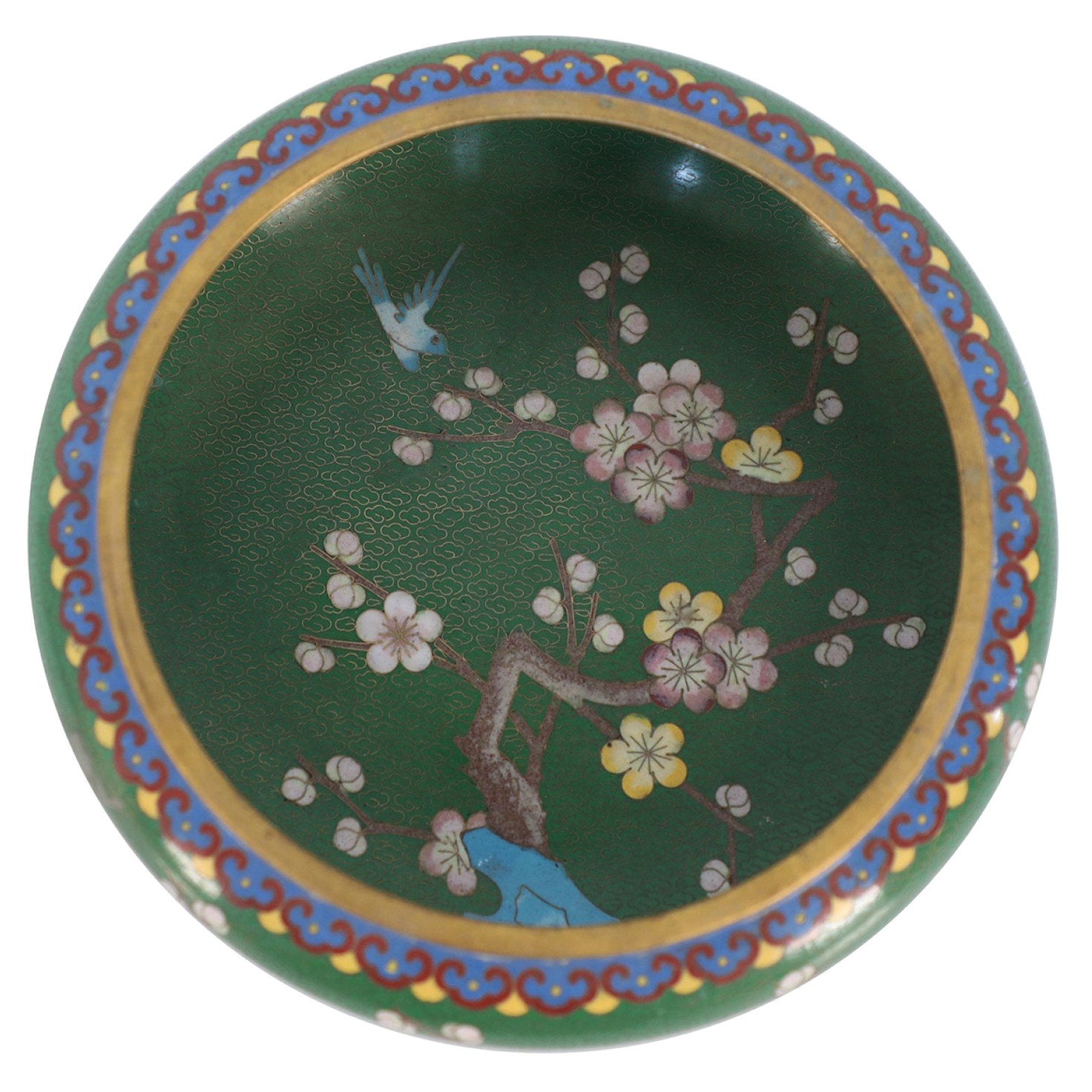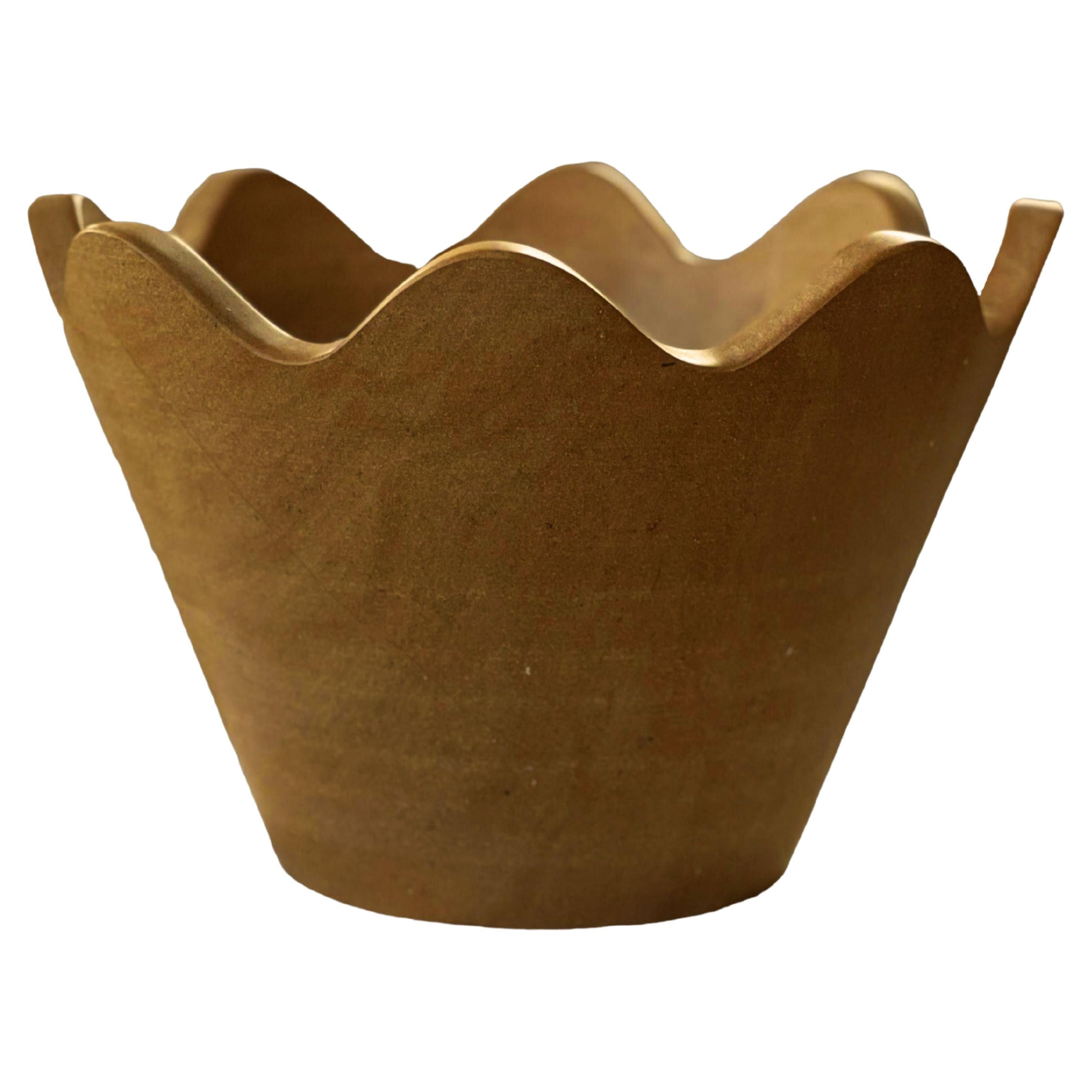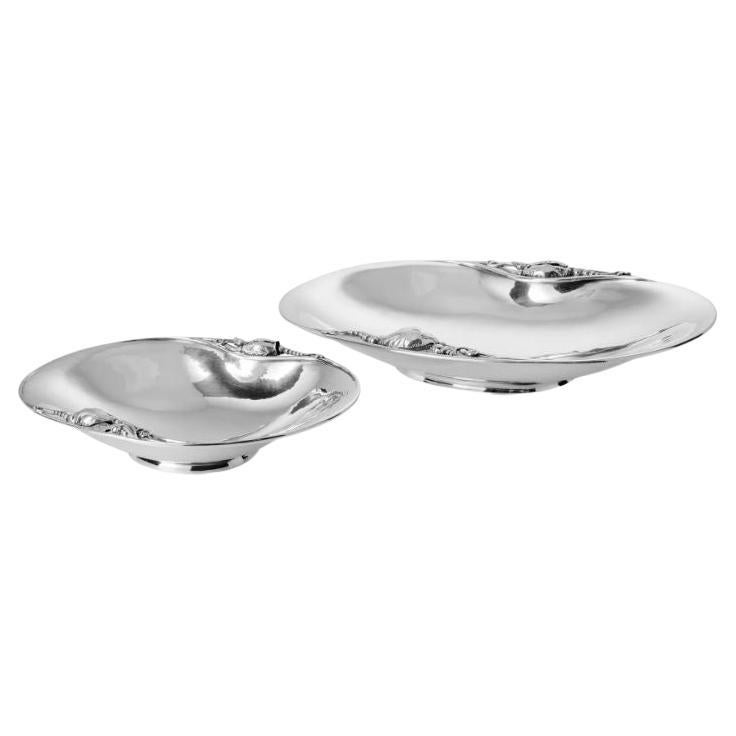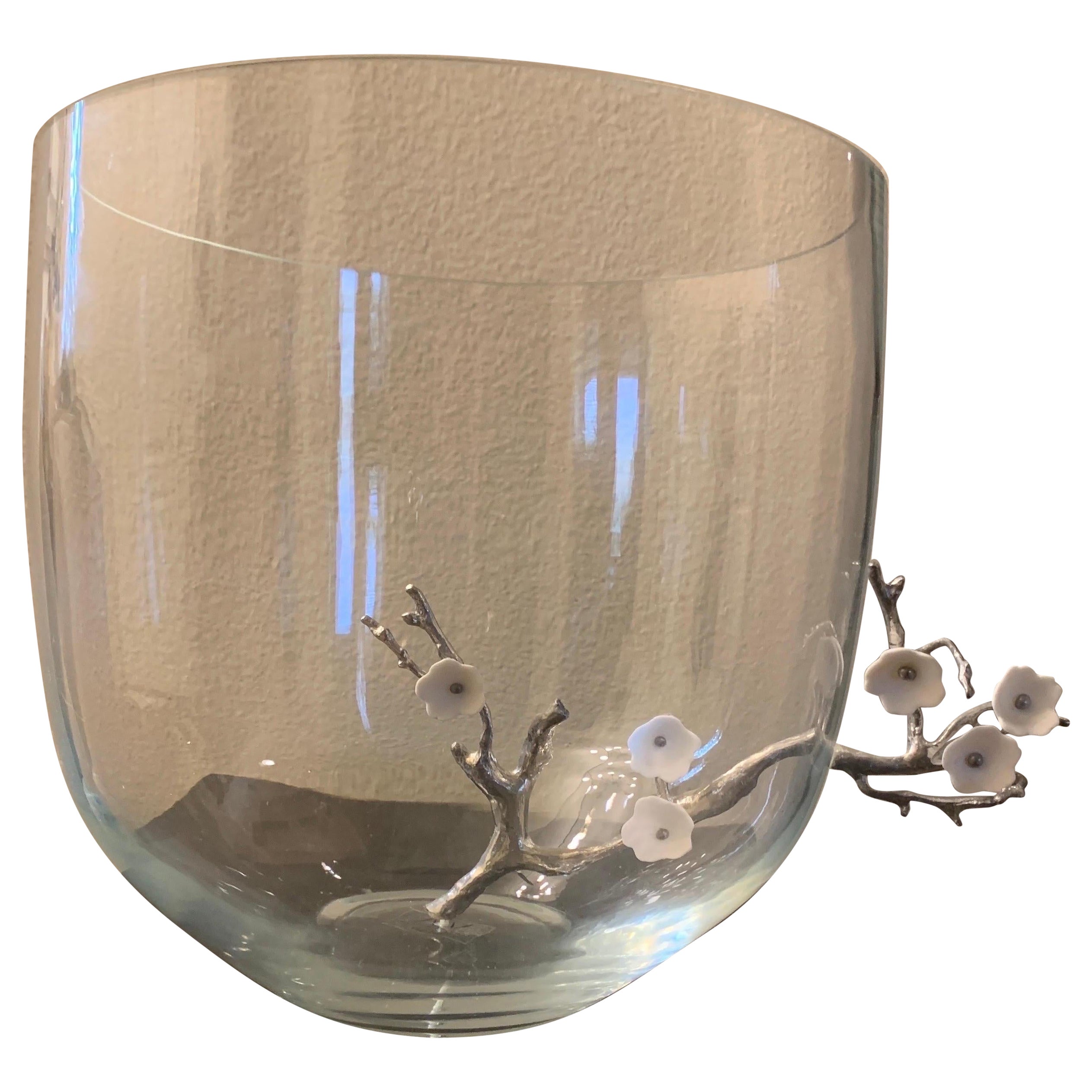Items Similar to Bowl with Dogwood Blossoms
Want more images or videos?
Request additional images or videos from the seller
1 of 6
Bowl with Dogwood Blossoms
About the Item
Bowl with Dogwood Blossoms, 1882
John Bennett (1840–1907)
Earthenware, painted and glazed
4 in. high, 7 5/8 in. diameter
Signed, dated, and inscribed (on the bottom): J B[monogram]ENNETT / N.Y. / 1882 / R
If the Herter Brothers was the most distinguished and successful cabinetmaking and decorating firm working in New York in the 1870s and 1880s, the transplanted Englishman John Bennett was probably the most gifted ceramicist working in New York in the Aesthetic Period. (Bennett was included in The Metropolitan Museum of Art’s landmark exhibition, In Pursuit of Beauty - Americans and the Aesthetic Movement, in 1986-87, and Ms. Alice Cooney Frelinghuysen’s chapter, “Aesthetic Forms in Ceramics and Glass,” pp. 216-19, significantly informs this essay). Born in England, the son of a potter who worked in the Staffordshire district, Bennett came under the influence of John Sparkes, head of London’s Lambeth School of Art. Soon thereafter, he was hired by Henry Doulton of the eponymous firm to teach artisans there the new art of underglaze faience decoration, which was part of a revival of the sixteenth-century interest in hand-painted ceramics.
A number of Bennett’s work’s for Doulton were shown in the Doulton display at the Centennial Exposition in Philadelphia in 1876, and the considerable success enjoyed by Bennett and Doulton from an American audience undoubtedly played an important role in Bennett’s decision to leave Doulton and England and set up shop in New York in 1877. By the next year, he had already established a studio in New York, where he produced his own pottery in the tradition of the Arts & Crafts innovators, William Morris and William de Morgan, and also taught classes at the new Society of Decorative Art to the growing band of women who had taken up china painting–both professionally and avocationally.
Bennett’s pottery developed a very serious following among students and collectors, and was offered for sale at such leading retail establishments as Tiffany & Company in New York. Typically, as with the present example, his work was brilliantly colored, with carefully drawn naturalistic flowers against a monochromatic background. In this example, he shows dogwood blossoms against a bold cadmium yellow background.
Bennett’s fully-developed American work is exceedingly rare, as he worked in New York only from 1877 to 1883, in which year he withdrew to a farm in rural West Orange, New Jersey, where his production continued on a limited basis. He remained listed as a ceramicist there until 1889. Although we do not know whether Bennett worked out of this 24th Street studio from the outset, he was indeed working there by 1879 when he made (and signed, inscribed, and dated) a charger with white and red flowers now in the collection of the Art Institute of Chicago, which specifically points to “412 East 24 / NY” (acc. no. 1998.317). Additionally, the U.S. Census of 1880 lists Bennett as a ceramicist located at that same address, married to Mary Bennett, by whom he had had six children.
The present bowl is signed by Bennett, inscribed New York, and dated 1882, which places it toward the end of his New York years. Other works by Bennett from this particular time period include an example from 1882 at the Houston Museum of Fine Arts, Texas (formerly collection of Hirschl & Adler Galleries, FAPG 20113D; photograph in Hirschl & Adler archives), with white dogwood against a cadmium yellow ground; a similar one also from 1882 with pink and white dogwood against a cadmium yellow ground in the collection of the Metropolitan Museum of Art, New York (acc. no.1984.425; see Frelinghuysen p. 219 fig. 7.21); a vase with pink hibiscus flowers against a blue ground from 1889, at the Detroit Institute of Arts (formerly collection of Hirschl & Adler Galleries, FAPG 19453D; photograph in H &A archives); and a large vase, made in 1882, with pink peonies on a bright blue ground (see Alice Cooney Frelinghuysen, Martin Eidelberg, and Adrienne Spinozzi, American Art Pottery—The Robert A. Ellison, Jr. Collection (New York: The Metropolitan Museum of Art, 2018), p. 40 Fig. 26), which is a gift to the Metropolitan Museum of Art, New York, from Robert A. Ellison, Jr. (acc. no. 2009.22.50; see Antiques & Fine Art (Early Summer 2009), p. 147 fig. 2 illus. in color).
CONDITION: Excellent, except for one small chip to the unglazed portion of the underside.
- Creator:John Bennett (Maker)
- Dimensions:Height: 4 in (10.16 cm)Width: 7.63 in (19.39 cm)Depth: 7.63 in (19.39 cm)
- Style:Aesthetic Movement (Of the Period)
- Materials and Techniques:Earthenware,Glazed
- Place of Origin:
- Period:
- Date of Manufacture:1882
- Condition:Wear consistent with age and use. Excellent, except for one small chip to the unglazed portion of the underside.
- Seller Location:New York, NY
- Reference Number:
About the Seller
No Reviews Yet
Recognized Seller
These prestigious sellers are industry leaders and represent the highest echelon for item quality and design.
Established in 1952
1stDibs seller since 2010
Associations
Art Dealers Association of America
- ShippingRetrieving quote...Ships From: New York, NY
- Return PolicyThis item cannot be returned.
More From This SellerView All
- Earthenware John Bennett Plaque with Pink and Blue PhloxBy John BennettLocated in New York, NYFAPG 20247D John Bennett (1840-1907), New York Plaque with pink and blue phlox, circa 1881-1882 Earthenware, painted and glazed Measures: 14 7/8 in. diameter, 1 13/16 in. high Signed and inscribed (on the back): J B[monogram] ENNETT / E 24 NY. / MC [or] CM If the Herter Brothers was the most distinguished and successful cabinet making and decorating firm in New York in the 1870s-1880s, the transplanted Englishman John Bennett was probably the most gifted ceramicist working in New York in the Aesthetic period. (Bennett was included in The Metropolitan Museum of Art’s landmark exhibition, In pursuit of beauty: Americans and the Aesthetic Movement, in 1986–87, and Alice Cooney Frelinghuysen’s chapter, “Aesthetic Forms in Ceramics and Glass,” pp. 216–19, significantly informs this essay). Born in England, the son of a potter who worked in the Staffordshire district, Bennett came under the influence of John Sparkes, head of London’s Lambeth School of Art. Soon thereafter, he was hired by Henry Doulton of the eponymous firm to teach artisans there the new art of underglaze faience decoration, which was part of a revival of the sixteenth-century interest in hand-painted ceramics. A number of Bennett’s works for Doulton were shown in the Doulton display at the Centennial Exposition in Philadelphia in 1876, and the considerable success enjoyed by Bennett and Doulton from an American audience undoubtedly played an important role in Bennett’s decision to leave Doulton and England and set up shop in New York in 1877. By the next year, he had already established a studio in New York, where he produced his own pottery in the tradition of the Arts & Crafts innovators, William Morris and William De Morgan, and also taught classes at the new Society of Decorative Art to the growing band of women who had taken up china painting, both professionally and avocationally. Bennett’s pottery developed a very serious following among students and collectors, and was offered for sale at such leading retail establishments as Tiffany & Company in New York. Typically, his work was brilliantly colored, with carefully drawn naturalistic flowers against a monochromatic background. Bennett’s fully developed American work, particularly pieces of larger scale, is exceedingly rare, as he worked in New York only from 1877 to 1883, in which year he withdrew to a farm in rural West Orange, New Jersey, where his production continued on a limited basis. He remained listed as a ceramicist there until 1889. While in New York City, Bennett maintained a studio at 412 East 24th Street. The present charger, boldly featuring pink and blue phlox, is signed by Bennett, and is inscribed “E 24 NY,” indicating its manufacture during Bennett’s time in New York. Although it is not dated, this piece is closely related stylistically to various dated pieces from 1881–82, which would place its production toward the end of Bennett’s New York years. Although we do not know whether Bennett worked out of this 24th Street studio from the outset, he was indeed working there by 1879 when he made (and signed, inscribed, and dated) a charger with white and red flowers now in the collection of the Art Institute of Chicago, which specifically points to “412 East 24 / NY” (acc. no. 1998.317). Additionally, the U.S. Census of 1880 lists Bennett as a ceramicist located at that same address, married to Mary Bennett with whom he had had six children. There are several other examples from Bennett’s time in New York City, which also give his studio address on East 24th Street, including a covered jar in cadmium yellow with indigo and green flowers made in 1881; an undated footed vase with lilac...Category
Antique 1880s American Aesthetic Movement Ceramics
MaterialsEarthenware
- Pair of Fern Wall BracketsLocated in New York, NYAmerican, circa 1850-1880. Eastern white pine (Pinus strobus), with wire armature and composition ornament, gessoed and gilded. Measures: 14 1/8 in. high, 16 5/16 in. wide (at the sh...Category
Antique 19th Century American Aesthetic Movement Wall Brackets
MaterialsWood
- Monumental Overmantel or Pier Mirror in the Aesthetic TasteLocated in New York, NYAmerican, third quarter of the 19th century. Pine, gessoed and gilded, with mirror plate. Measures: 81 ½ in. high, 59 ½ in. wide. Condition: Excellent. The gilding has been cleaned and very, very slightly inglided as necessary. The ball at the upper left was missing and has been replicated based upon...Category
Antique 19th Century American Aesthetic Movement Pier Mirrors and Consol...
MaterialsMirror, Pine
- Pier Mirror with Églomisé PanelsLocated in New York, NYPier mirror with Reverse Painted, or Eglomisé, Panels, about 1800 New York, New York Eastern white pine, gessoed and gilded, with compo ornament, glass, reverse painted and gilded,...Category
Antique Early 1800s American American Classical Pier Mirrors and Console...
MaterialsGlass, Wood
- Pair of 'Old Paris' Porcelain Vases with Drapery DecorationLocated in New York, NYFrench Pair “Old Paris” Porcelain Vases with Drapery Decoration, about 1820 Porcelain, painted and gilded 13 1/16 in. high CONDITI...Category
Antique 1820s French Empire Vases
MaterialsPorcelain
- Center Table with Scroll Legs, Paw Feet and Marble TopsBy Thomas SeymourLocated in New York, NYCenter Table, about 1818–20 Attributed to Thomas Seymour (1771–1848), working either for James Barker or for Isaac Vose & Son, with Thomas Wightman (1759...Category
Antique 1810s American American Classical Center Tables
MaterialsMahogany, Wood
You May Also Like
- ROSENTHAL Blossom 10" Crystal BowlBy RosenthalLocated in Charlotte, NCA Late 20th Century decorative crystal bowl by Rosenthal, their "Blossom". Clear crystal round bowl with a blossom-like shape, flared out at top gently tapering to the base, smooth i...Category
Late 20th Century German Other Decorative Bowls
MaterialsCrystal
- Chinese Green and Cherry Blossom Cloissone BowlLocated in New York, NYVintage Chinese green cloisonne bowl with cherry blossoms and birds on the interior and exterior, and a yellow and blue pattern around the rim.Category
20th Century Chinese Chinese Export Decorative Bowls
MaterialsMetal, Enamel
- Blossom Bowl: Large Bowl in Honeycomb Jaisalmer Stone by Anastasio HomeLocated in Torrington, CTIntroducing the exquisite Blossom Bowl, a true masterpiece exclusively produced by Anastasio Home. This limited production, functional object d'art is versatile, serving as a hea...Category
2010s Decorative Bowls
MaterialsStone, Travertine, Marble
- Georg Jensen Sterling Silver Oval Blossom Bowl 2ABy Georg JensenLocated in Hellerup, DKA sterling silver Georg Jensen oval Blossom/Magnolia dish on a small foot, design #2A by Georg Jensen from 1904. Additional information: Material: Sterling silver Styles: Art Nouvea...Category
20th Century Art Nouveau Decorative Bowls
MaterialsSterling Silver
- Georg Jensen Sterling Silver Oval Blossom Bowl 2DBy Georg JensenLocated in Hellerup, DKA vintage sterling silver Georg Jensen Blossom/Magnolia serving bowl, with a fixed central divider, design #2D by Georg Jensen from 1904. Additional information: Material: Sterling ...Category
20th Century Art Nouveau Decorative Bowls
MaterialsSterling Silver
- Vanessa Mitrani Glass Cherry Blossom Sculpture Bowl Paris FranceBy Vanessa MitraniLocated in Palm Springs, CAThis is the large version of a glass cherry blossom bowl by French designer Vanessa Mitranii. The metal cherry blossom came in 2 size bowls and also some glass cups. This larger bowl...Category
Early 2000s French Organic Modern Decorative Bowls
MaterialsArt Glass





